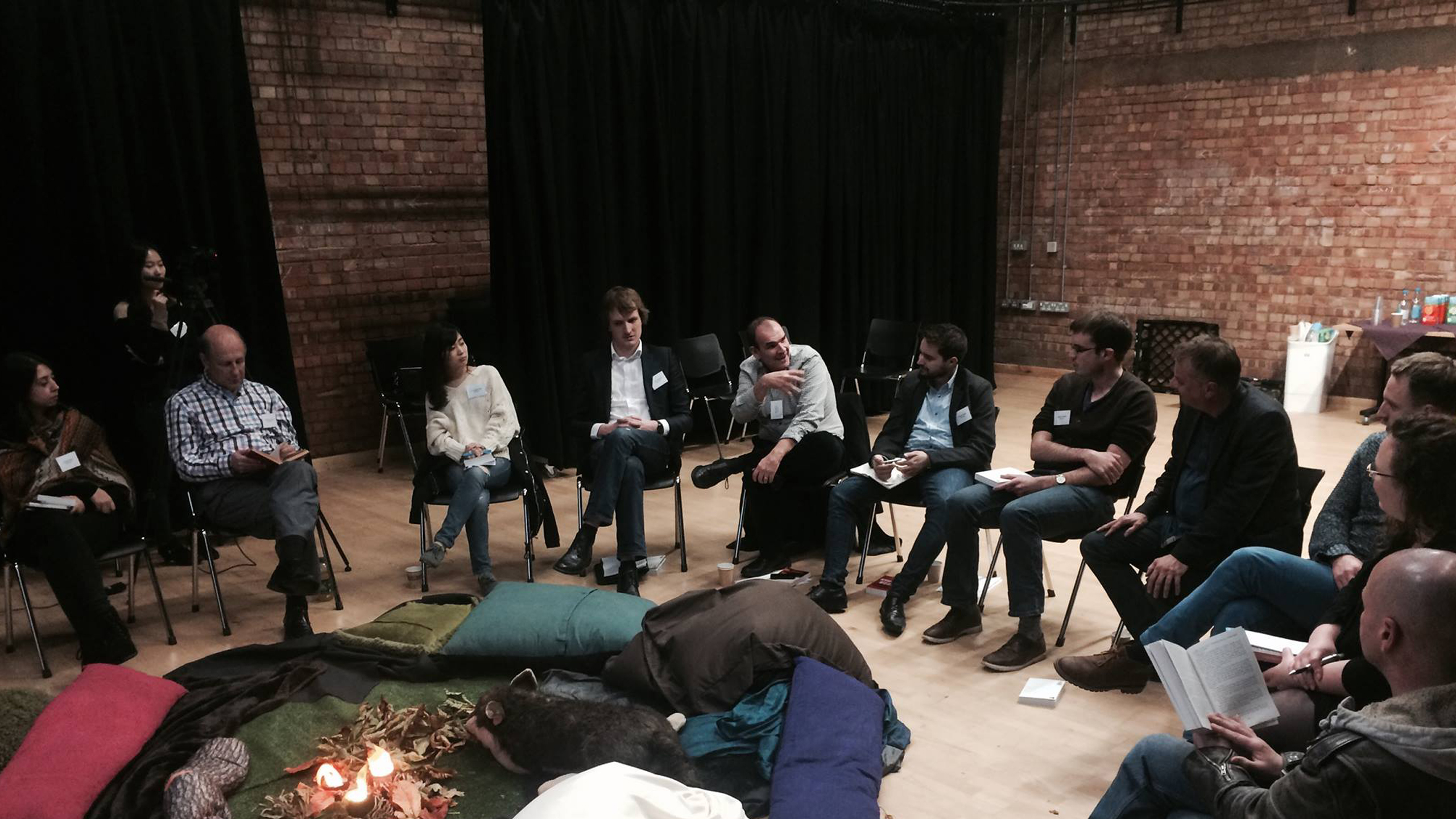And So The Judge Returns: Blood Meridian Workshop at the University of Warwick
DOI:
https://doi.org/10.31273/eirj.v3i2.139Keywords:
Cormac McCarthy, Blood Meridian, Judge Holden, workshop, live-stream, kidAbstract
Pulitzer Prize winning author Cormac McCarthy’s work has become required reading in literary criticism, and yet no syllabus appears to provision for the in-depth discussion his texts, particularly the 1985 novel, Blood Meridian: Or, the Evening Redness in the West, require. The ‘And So the Judge Returns: Blood Meridian Workshop’ at the University of Warwick emerged from the idea to provide a space that facilitates such a discussion. Designed to bring academics and non-academics of all ages together in one space, the workshop quickly developed from a small, Warwick-based event into a live-streamed and recorded international conference with a significant audience based in the United States.
The workshop reaffirmed the interest in the novel’s enigmatic antagonist Judge Holden and motifs such as the landscape and violence. Less traditional ideas of the judge were also discussed, such as reading the judge as fraud or as weary of chaos and perpetual violence. The workshop succeeded in creating a space to share thoughts and ideas and continue the academic discourse on the novel. Speakers included Dr Nicholas Monk and Dr David Holloway, both established McCarthy critics; Peter Josyph whose artistic engagement with McCarthy’s work and career his highly respected among critics; and Dr Dan O’Hara, expert in American Studies. Ronan Hatfull and Katja Laug represented the younger generation of McCarthy critics. Live-streaming also afforded insights into the academic discourse to the mostly non-academic online audience. The article provides a summary of the day’s events and the links to the edited recordings.
Downloads
References
Bell, V.M. (1988), The Achievement of Cormac McCarthy, Baton Rouge: Louisiana State University Press
Bourne, A. (2009), ‘“Plenty of signs and wonders to make a landscape”: Space, Place, and Identity in Cormac McCarthy’s Border Trilogy’, Western American Literature, 44 (2), 108–125
Campbell, N. (2000), ‘Liberty beyond its proper bounds: Cormac McCarthy’s History of the West on Blood Meridian’, in Wallach R., (ed.), Myth, Legend, Dust: Critical Responses to Cormac McCarthy, Manchester and New York: Manchester University Press and St. Martin’s Press [distributor], pp. 217–26
Cant, J. (2008), Cormac McCarthy and the Myth of American Exceptionalism, New York: Routledge
Eaton, M.A. (2003), ‘Dis(Re)Membered Bodies: Cormac McCarthy’s Border Fiction’, MFS: Modern Fiction Studies, 49(1), 155–80
Grammer, J.M. (1999), ‘“A Thing Against Which Time Will Not Prevail”: Pastoral and History in Cormac McCarthy’s South’, in Arnold, E.T. and Luce D.C. (eds.), Perspectives on Cormac McCarthy, Jackson: University Press of Mississippi, pp. 29–44
Jillett, L. (2016), Borders and Landscapes, London: Bloomsbury
Keller Estes, A. (2013), Cormac McCarthy and the Writing of American Space, Amsterdam and New York: Rodopi
Kollin, S. (2001) ‘Genre and the Geographies of Violence: Cormac McCarthy and the Contemporary Western’, Contemporary Literature, 42 (3), 557-588
McCarthy, C. (2010), Blood Meridian, or, The Evening Redness in the West, London: Picador
Monk, N. (2002), ‘“An Impulse to Action, an Undefined Want”: Modernity, Flight, and Crisis in the Border Trilogy and Blood Meridian’, in Hall, W.H. and Wallach, R. (eds.), Sacred Violence: Cormac McCarthy’s Western Novels, El Paso: Texas Western Press/University of Texas at El Paso, pp. 83–103
Monk, N. (2013), ‘News from Another World: Career and Critical Responses to Cormac McCarthy’, Literature Compass, 10 (2), 111-121
Shaviro, S. (1999), ‘“The Very Life of the Darkness”: A Reading of Blood Meridian’, in Arnold E.T and Luce D.C. (eds), Perspectives on Cormac McCarthy, Jackson: University Press of Mississippi, pp. 145–58

Downloads
Published
Issue
Section
License
Authors who publish with this journal agree to the following terms:
Authors retain copyright and grant the journal right of first publication with the work simultaneously licensed under a Creative Commons Attribution License (CC-BY), which permits use and redistribution of the work provided that the original author and source are credited, a link to the license is included, and an indication of changes which were made. Third-party users may not apply legal terms or technological measures to the published article which legally restrict others from doing anything the license permits.
If accepted for publication authors’ work will be made open access and distributed under a Creative Commons Attribution (CC-BY) license unless previously agreed with Exchanges’ Editor-in-Chief prior to submission.
Authors are able to enter into separate, additional contractual arrangements for the non-exclusive distribution of the journal's published version of the work (e.g., post it to an institutional repository or publish it in a book), with an acknowledgement of its initial publication in this journal.
Authors are permitted and encouraged to post their work online (e.g., in institutional repositories or on their website) prior to and during the submission process, as it can lead to productive exchanges, as well as earlier and greater citation of published work. (see: The Effect of Open Access)
